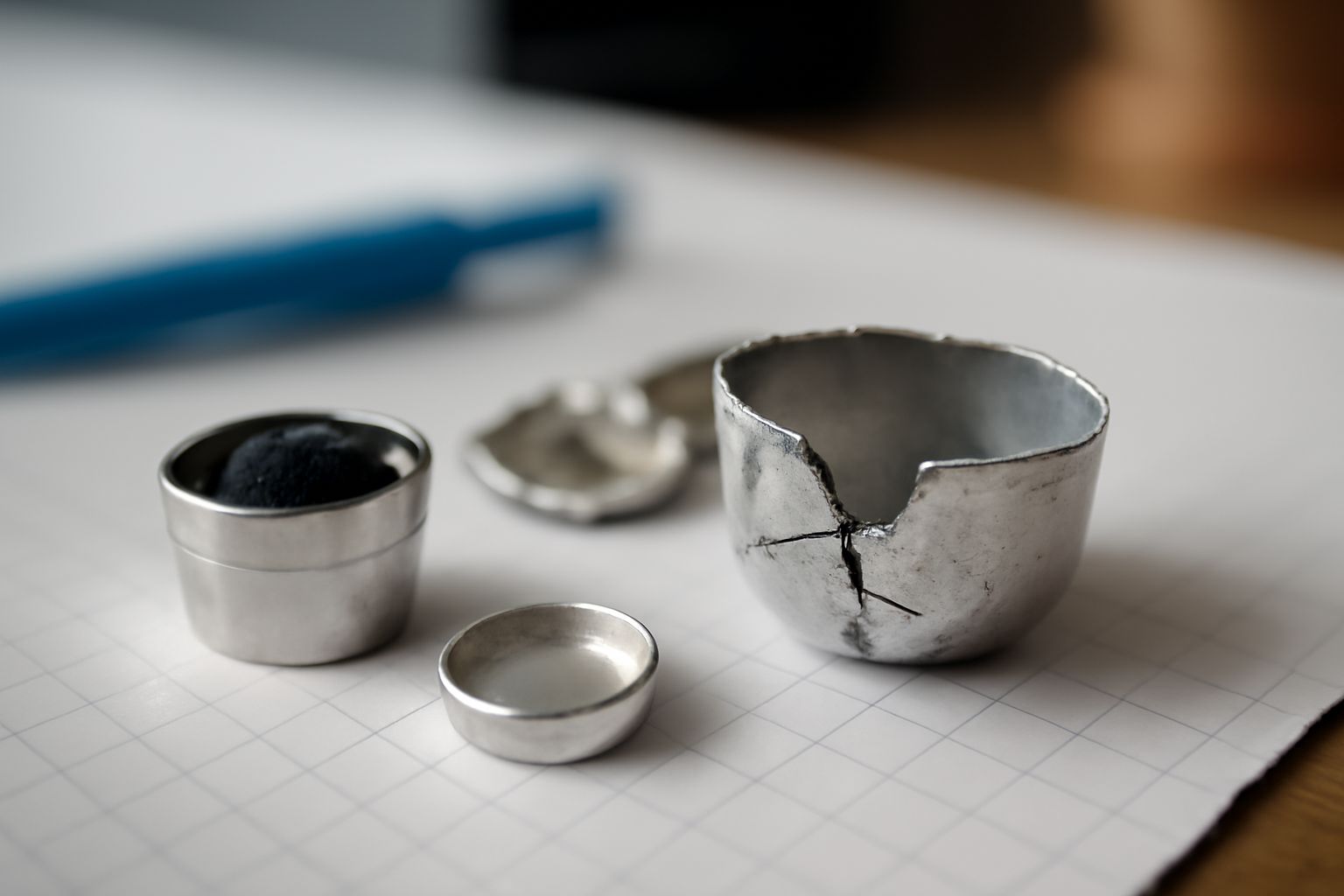Your cart is empty.
shop now
Your cart is empty.
shop now
Unexpected pan failure causes lost samples and ruined tests. Problems with aluminum DSC crucibles can slow down research and limit analysis quality in any lab.
The most common issues include temperature failure, contamination, cracking, and short lifespan. Knowing how to stop each problem means more accurate, repeatable data for every DSC run.

I have seen too many labs repeat costly tests just because a small crucible issue ruined their baseline or caused missing mass. By checking specs, using proper cleaning, and regular inspection, you can stop most problems at their source before they risk your results.
When aluminum pans fail at high heat, testing stops and materials can be lost. Choosing the wrong temperature rating causes the most expensive errors.
Crucible failure happens when used above their rated limits, most often 600°C for standard aluminum. Excess heat can soften, distort, or melt pans, causing data errors and contamination.
| Problem Cause | What Happens | Solution/Prevention | Reference |
|---|---|---|---|
| Temperature Overload | Pans deform, sample leaks out | Check specs, never run above pan max temp | differential scanning calorimetry |
| Fast Heating | Thermal shock, cracks appear | Use gradual heating increments | thermal shock |
| Low Quality/Thin Pans | Early warping at moderate heat | Buy thick, tested pans for tough jobs | aluminum |
I faced a major loss in one TGA test because the pans melted completely. Since then, I always double-check melt points and ramp rates for every run.
Signal noise or unexpected peaks may come from a dirty or low-purity crucible. Even small amounts of residue can change results in heat flow analysis.
Prevent contamination by selecting high-purity aluminum pans, cleaning them with approved solvents before and after use, and storing crucibles in dust-free sealed containers.
| Contamination Source | Risk Outcome | Prevention Step | Reference |
|---|---|---|---|
| Previous Sample Residue | Baseline drift, cross-sample mix | Rinse with acetone or ethanol; dry completely | contamination |
| Lab Dust | Erratic readings, false signals | Store in airtight case after cleaning | laboratory equipment |
| Impure Aluminum | Reaction with sample at high heat | Request 99.99% purity pans | purity |
Once I moved to 99.99% pans and set a strict cleaning schedule, random peaks and repeat errors dropped right away in our QC lab’s data logs.
Cracking often means immediate loss of sample and wasted test runs. This weak spot shows up when pans are stressed or cooled too fast.
To avoid cracking, gradually increase or decrease temperature, use thicker-walled pans for stressful runs, and confirm each pan’s recommended sealing method for your samples.
| Cracking Factor | Why It Happens | How to Fix | Reference |
|---|---|---|---|
| Thermal Shock | Fast temperature jumps | Ramp temp in small steps; do not quench | thermal shock |
| Weak Construction | Thin or uneven walls | Choose pans with uniform, thick walls | wall thickness |
| Poor Lid Seal | Stress on lip, samples leak while heating | Use matched lids from same batch | seal |
I had suffered frequent cracks until we began using thick-walled, sealed pans and slowed ramp rates. This change solved two issues with one fix.
Poor upkeep shortens pan life and risks data loss. Regular checks and good practice are basic lab insurance when it comes to consumable parts.
Maintain aluminum DSC crucibles with gentle cleaning, careful handling, regular inspection for warping or cracks, and storing pans in dry, protected containers between uses.
| Maintenance Step | Purpose | Longevity Boost | Reference |
|---|---|---|---|
| Mild Solvent Wash | Remove residues, prevent contamination | Less surface wear, stable results | solvent |
| Visual Inspection | Find cracks, deformations early | Avoids use of weak pans | inspection |
| Dry, Sealed Storage | Ward off corrosion and dust | Extends storage life | corrosion |
My habit of a quick check for cracks before each test has saved countless hours. My oldest batch of high-purity pans has outlasted many supposed “disposables” thanks to good storage and cleaning habits.